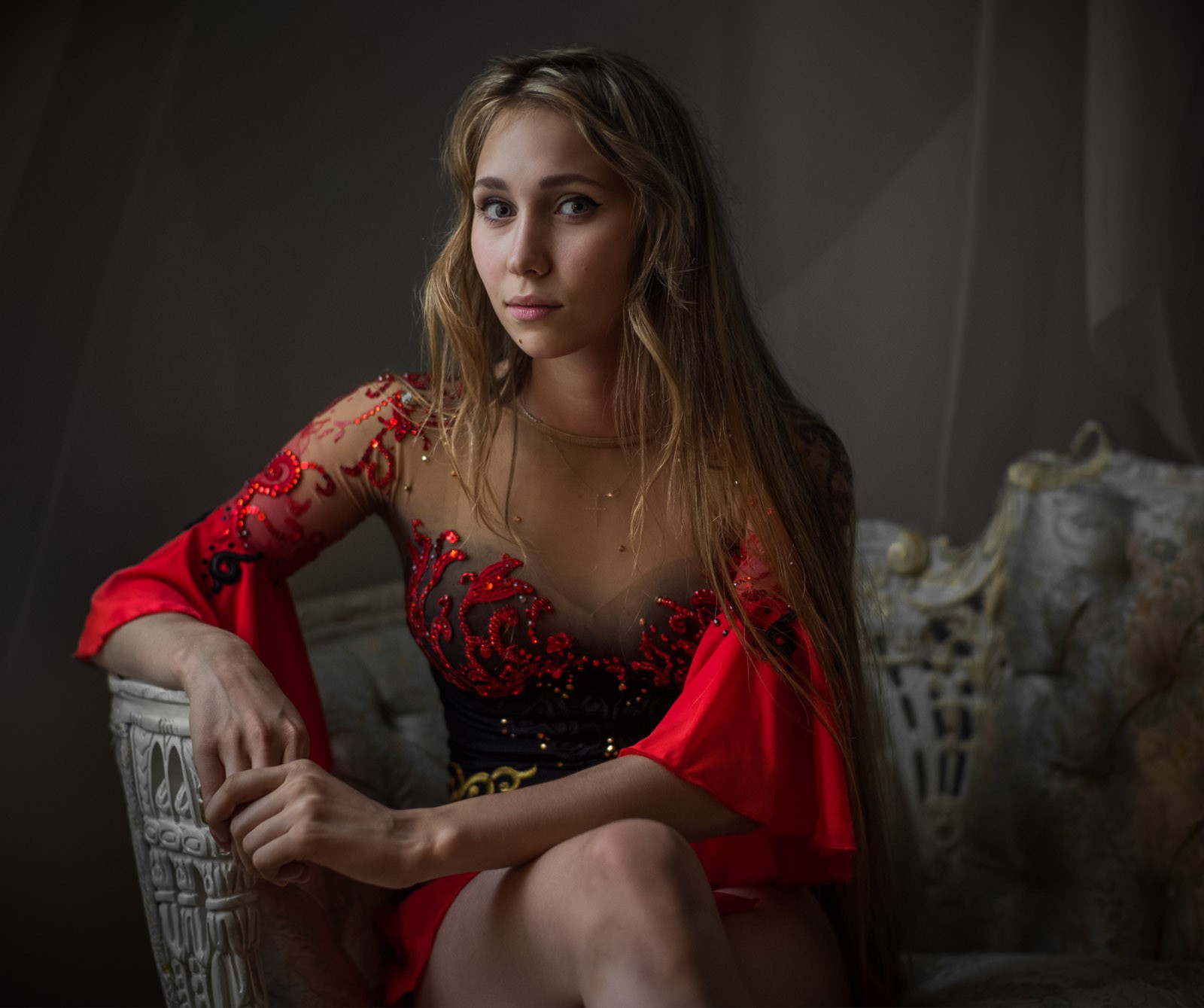With tons of studio equipment sitting at the studio, I find myself gravitating towards using it less and less. Why? Because the current state of imaging technology completely changed the perspective on usability of available light. While lens design is constrained by the laws of physics that makes high-speed optics rather inconvenient to use and expensive to acquire, the digital capture keeps improving amazingly fast. Today, consumer cameras deliver acceptable image quality at ISO3200, and professional gear produces commercial-grade quality at ISO6400. Complemented by image stabilization, even relatively slow f/2.8 lenses can be successfully used handheld at shutter speeds that a few years ago only rangefinder cameras used to allow.
So, why the available light? First, when it is there, it allows the most natural working environment. This is especially helpful for portrait photography, or anything that involves people as subjects, really. When you have just a window for a light source, as opposed to a humongous softbox, or a cumbersome umbrella, a shoot turns into a relaxed conversation, and the subject does not feel a pressure to “successfully participate in a photo shoot for the best outcome”. When there is more than one person, and you have some sort of candid scene in mind, even the mere presence of a lighting fixture can ruin the shot.

“Available”, however, does not always mean “natural”. “Available light” is any kind of light that is there for you, but not the one that you brought and therefore have the limited control over it. Quite often, studying the light sources, and figuring out how the light is distributed in the room with respect to what is going on there, will give you an excellent insight on what and how can be photographed there. Doing this homework beforehand results in professional quality images with the minimal interference to the action.
Available light can be absolutely a life saver when shooting in adverse conditions, where the amount of time spent on a set is critical. For instance, when you are shooting a car in 12℉ and 20 knots of wind. I a situation like that, setting up lights is not really an option. Instead, finding a spot that is already lit and positioning the car to have the lights illuminate it correctly is a much more feasible idea.

Suitability for available light photography is probably the most valuable feature of modern cameras. All that photographers need to do is to embrace it, which requires a special set of skills described below.
- ability to see the light
- understanding how the environment can be used to modify the light, if necessary
- knowledge of color theory and what needs to be done to minimize effects of mixing several light sources with different color temperatures, or even use them to your advantage
We will discuss these skills in detail, and how the available light can be used in different types of photography, in our subsequent blog posts.
You might ask, why not to use artificial lighting? Shooting with studio lights is a luxury. By that I not only mean that they are expensive (at least the ones that are worth buying are), but also the logistics of it. If the shoot is planned on location, there is a lot of equipment to bring and to set up. Sometimes so much of it that a mid-sized sedan is too small for all those trunks, cases, boxes and metal tubes. Of course, there are situations when studio lighting is unavoidable, and that’s the time to hire an assistant, or prepare yourself for some serious heavy lifting.
You will be surprised, however, in how many cases studio lighting can be avoided. However, it may be rather tempting not to, like when you want to impress the client with the bells and whistles of technology. To resist the temptation, just ask yourself one more time, what is it that the client really needs.


You must be logged in to post a comment.